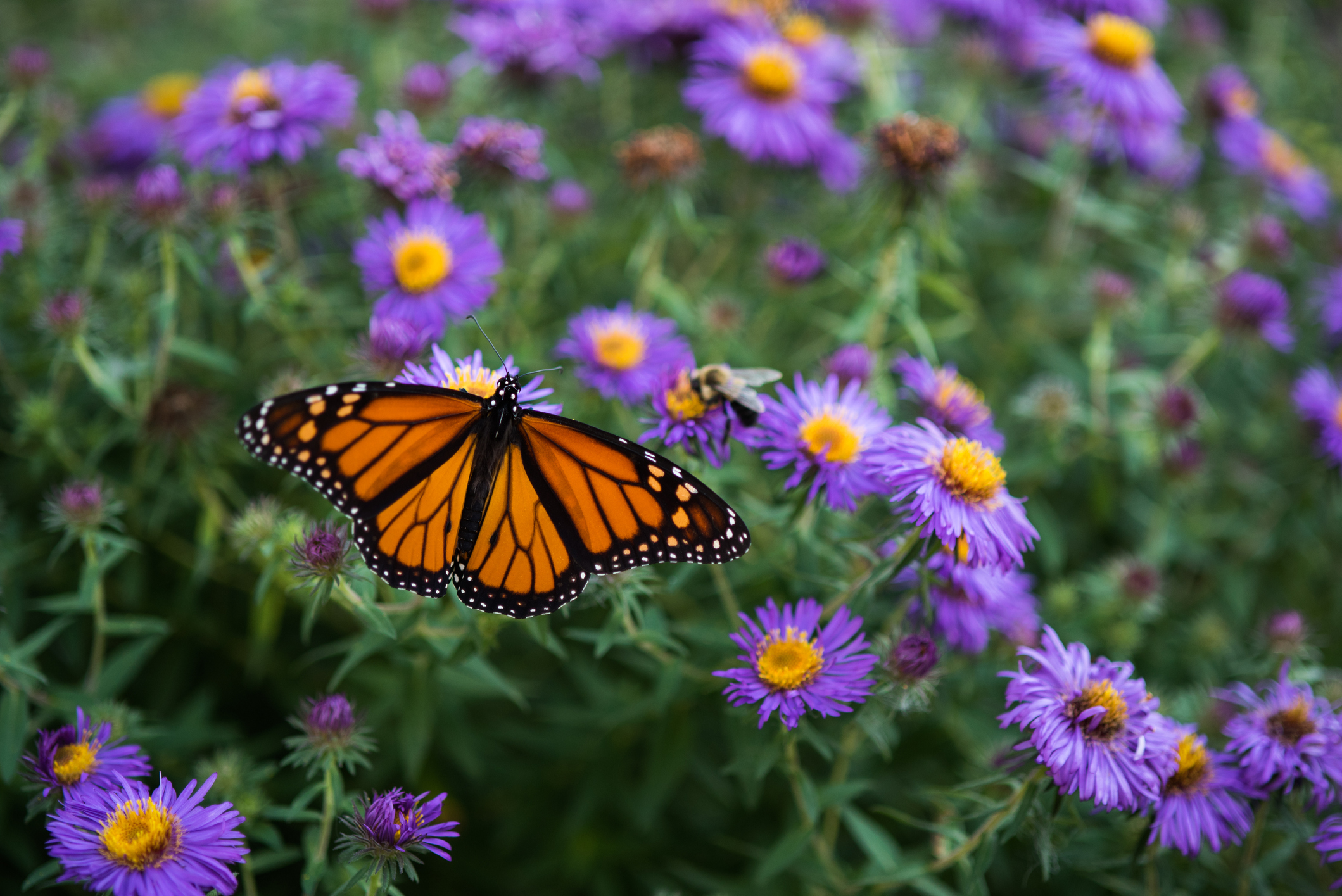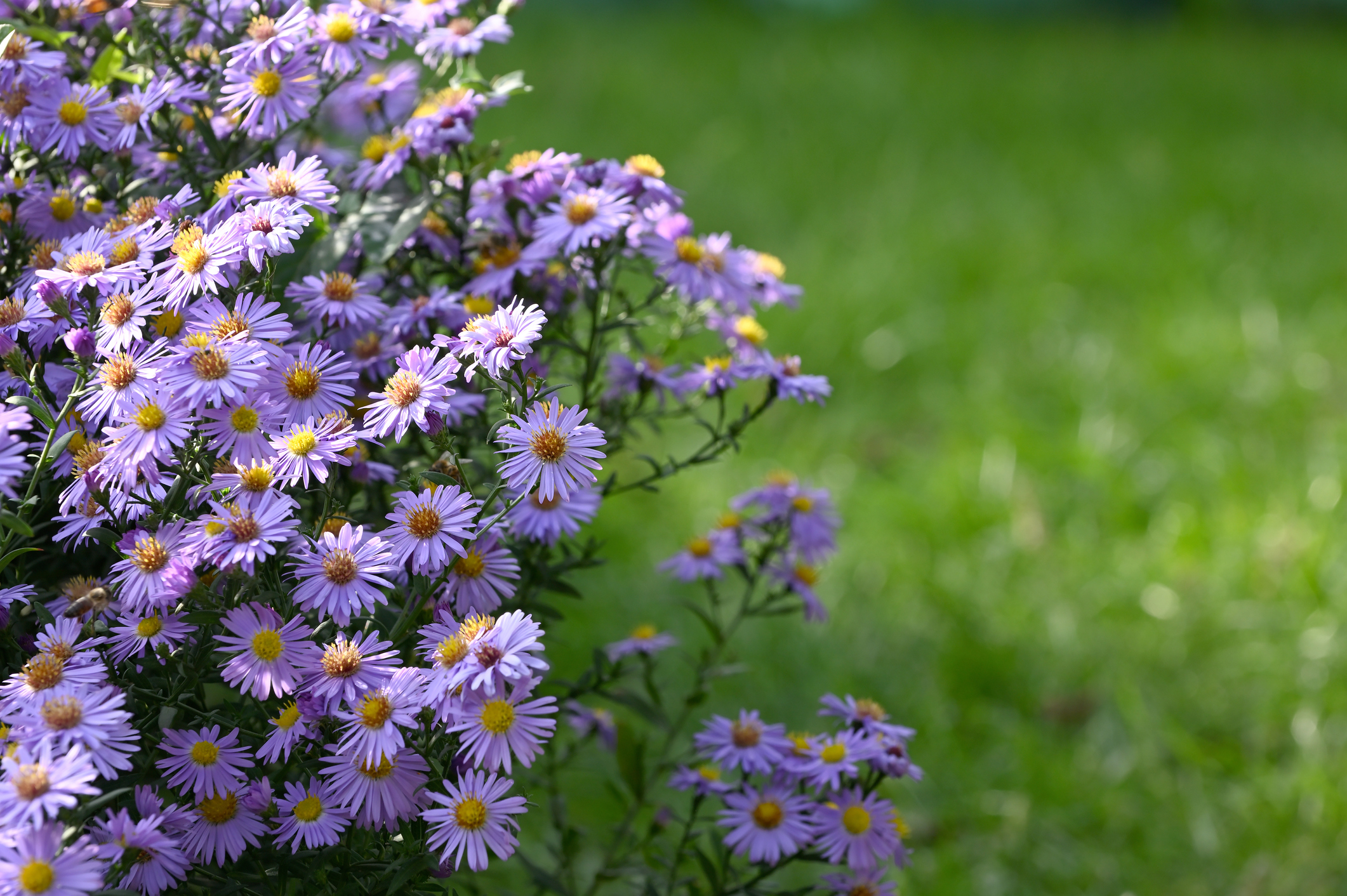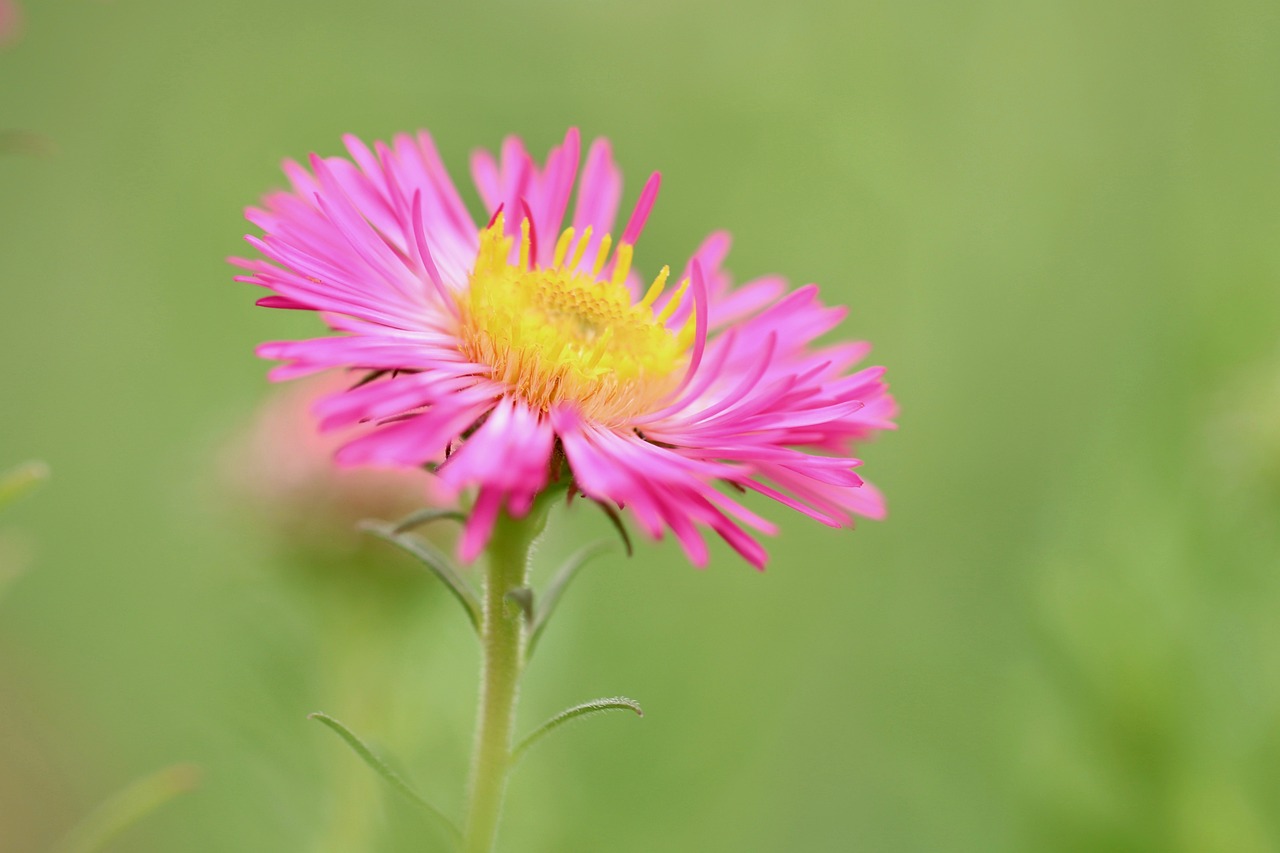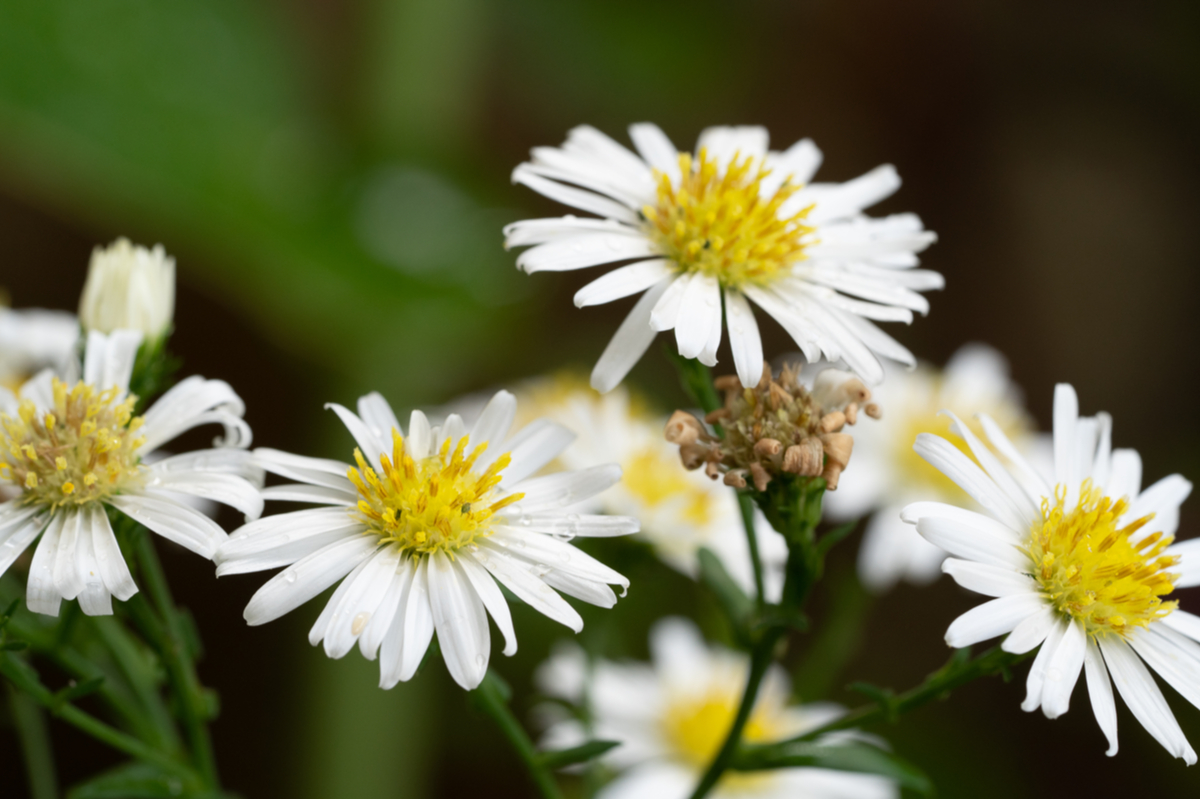Asters bloom most often in summer and fall, making them a great option for filling out your garden toward the end of the season. They also make a great transition flower, thriving in USDA hardiness zones three through eight. This, combined with how pretty the flowers are, makes them a popular garden flower, especially for fall flower gardens. To get started growing your own, here’s everything you need to know about how to care for asters.
Varieties of asters you can grow

Asters are often confused with daisies due to their similar appearance. Believe it or not, there are over 180 varieties of this dainty flower, and you may find that some are more popular in your area than others. Asters grow throughout the U.S. and Eurasia, due in large part to the range of growing zones this flower can thrive in. Three of the most popular varieties you can find are the purple dome variety, calico variety, and Harrington’s pink variety.
Purple dome variety
The purple dome variety of asters is a member of the New England aster family. It’s a dwarf variety, reaching about eighteen inches, making it a perfect option for containers, hanging baskets, or small spaces that need to be filled in your garden! This variety prefers full sun to partial shade and well-draining soil. This flower will have no trouble thriving as long as it’s in the right location. Purple dome asters have (you guessed it) deep purple flowers with yellow centers, blooming from late summer to fall.
Calico variety
The calico aster is a perennial variety, coming back year after year — if you’ll have it. Like the purple dome, it prefers full sun to partial shade locations and has a two-month blooming season from late summer to fall; however, it’s important to note that the full sun locations are more tolerated when the soil isn’t soaked. The calico aster has beautiful white petals and a mix of yellow and reddish centers (lending to the calico name).
Harrington’s pink variety
The Harrington’s pink variety of aster has pink flowers that bloom from late summer to late fall. Like the purple dome, it’s also a member of the New England asters; however, it’s not a dwarf variety and can grow up to six feet tall, which should be taken into account when deciding where to plant. It fits seamlessly into a cottage-style garden, having won several flower awards around the world.
Caring for your outdoor asters

Although you can plant asters closer to their blooming season, it’s most common to plant them in the spring when they arrive in nurseries. Most varieties don’t bloom until late summer, but they have beautiful greenery you can enjoy up until then! It’s possible to grow asters from seeds, too, but keep in mind that it can take several years for them to grow to full size.
When it comes to how to care for asters, there are needs you can meet that are generally consistent from variety to variety; however, because there are over 180 varieties of asters, you’ll want to check the specific requirements for the kind you’re growing before diving in.
Light and temperature
Most aster flowers enjoy an area with full sun to partial shade. For partial shade areas, you’ll want to make sure that there’s still more sun than shade throughout the day before planting, as too much shade will cause the plants to become lanky and have fewer blooms.
Since their natural blooming time is late summer into fall, you’ll find that asters prefer cooler temperatures. This makes most of the varieties frost hardy and means they don’t have any needs for additional humidity like your indoor tropical plant.
Watering and soil type
Newly planted asters should be watered regularly to establish the roots. Keep the soil slightly moist, but remember that they don’t like to be soaked (especially in full sun locations). They also require regular waterings during their blooming season in order to keep up their growth and sustain the beautiful flowers.
As far as soil goes, asters (like most plants) enjoy a well-draining soil. Their ideal environment is in loamy, slightly acidic soil. If the soil is more alkaline, you can add some manure or compost to help create the best environment.
Be wary of pests and diseases

Although most insects will leave asters alone, they are susceptible to lace bugs. The damage done will be more noticeable than the pests themselves, so if you start to see yellowing and dropping leaves in the summer, you should check for very small, gray-brown insects. If you spot any, or expect that they exist and you can’t see them, consider using some insecticidal soap (following the directions on the bottle).
As far as diseases go, rust and powdery mildew are the most common that infect aster plants. As long as you space out your plants properly and take care to water the base of the plant instead of from the top down, you should be okay!
Propagating your asters

If you love the look of your asters and want more, you can easily propagate them with both seeds and stem cuttings! With asters, it’s also possible to dig up their root clumps, carefully divide them into pieces, and replant with the woody center intact. As long as they have the woody center, the clumps should survive with little to no issue.
Do asters spread?

Asters can spread, and some types of aster will spread quite aggressively! This is great news if you want a garden full of aster flowers, but it can be frustrating if you’re trying to grow other plants that your asters are crowding. Controlling the spread will depend on the type of aster you have.
All asters can spread through seeds, so deadheading your asters is one way to limit its spreading. Clip or pinch the flowers off the plant as they fade, before they have a chance to develop seeds. Some asters, such as the aromatic aster and the white wood aster, also spread through rhizomes underground. To keep these asters from spreading out of control, they’ll need to be dug up and divided every couple of years. Alternatively, you can grow them in a container.
Asters are a gorgeous, late-season flower that will keep your garden beautiful through the end of the year. Once you’re familiar with how to care for asters outdoors, you’ll find that they provide your garden with a lot of life. Because there are so many varieties, you can easily choose the ones that fit your garden best.



